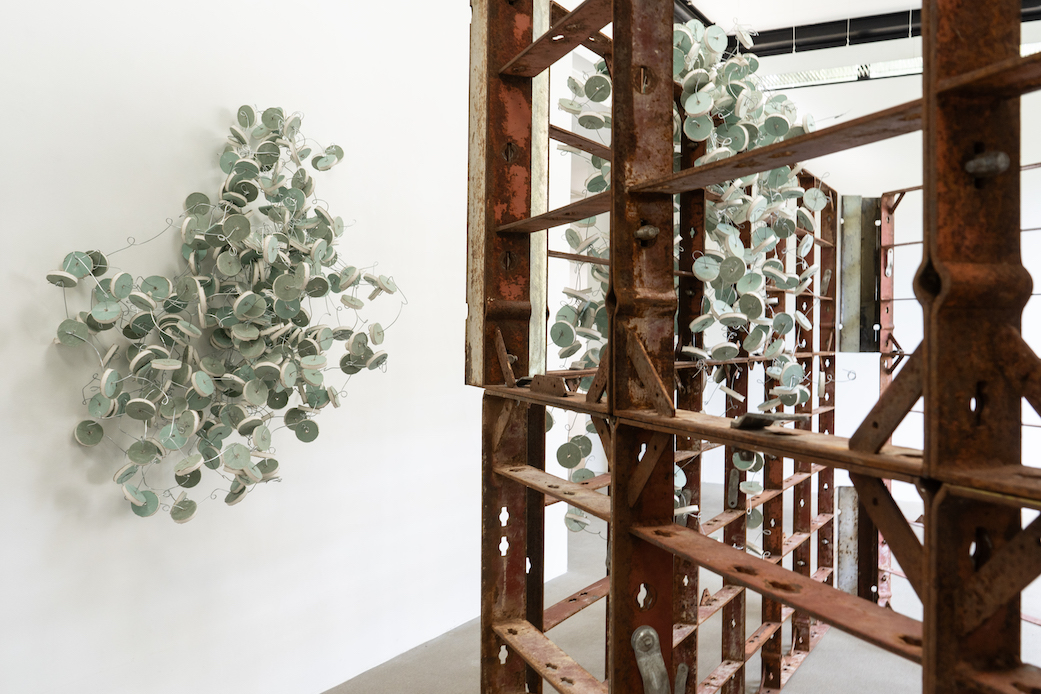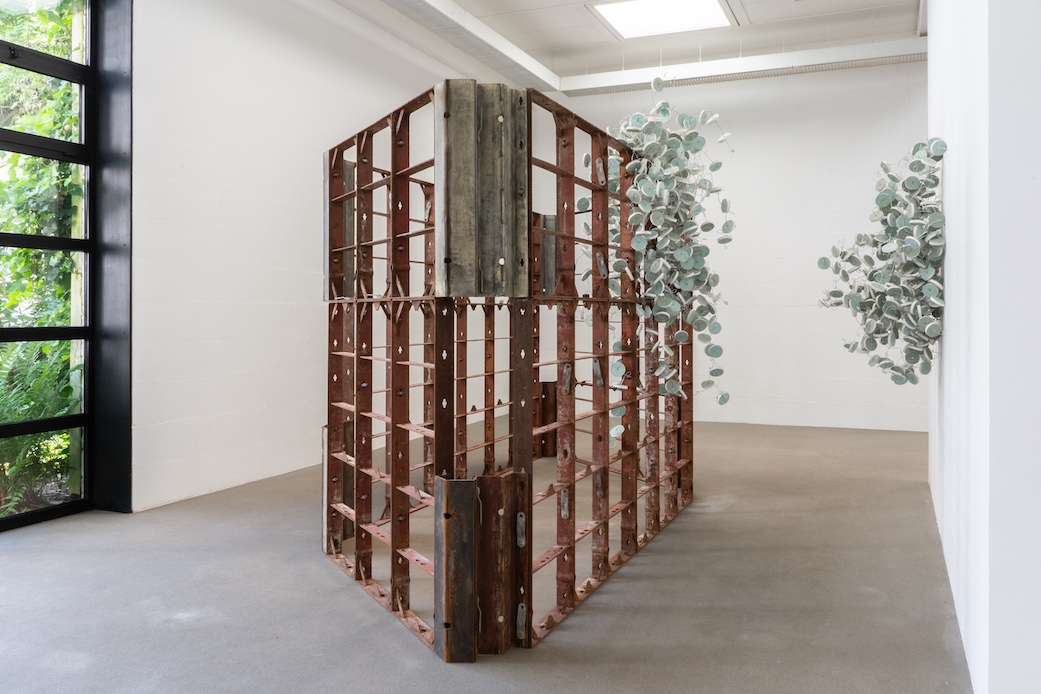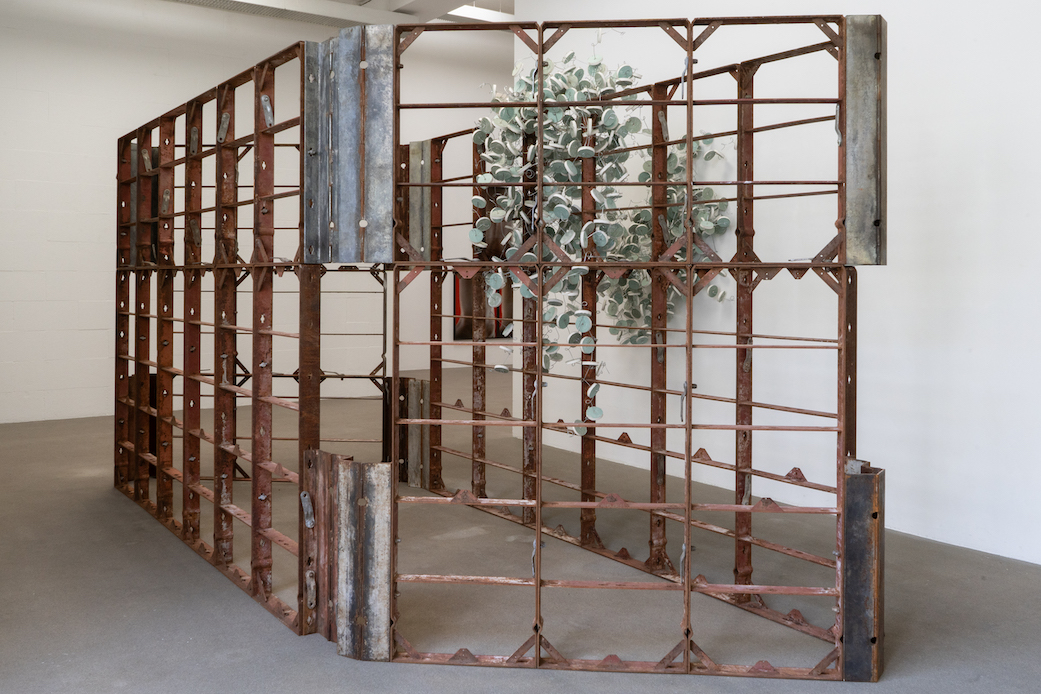Exhibition information
Franka Hörnschemeyer
Volume of Uncertainty (Shift 224)
Volume of Uncertainty (Shift 224)
From March 1 to July 26, 2024, Galerie m is showing the solo exhibition "Volume of Uncertainty (Shift 224)" by Franka Hörnschemeyer (*1958 in Osnabrück). The title refers to a sculpture developed especially for the gallery space, which consists of a geometrically arranged metal support structure and a filigree, organic-looking structure of green and white circularly punched plasterboard panels. Fundamental to Franka Hörnschemeyer's work is the meaning, functionality and materiality of space - the physical experience of space is always central.
The steel framework of Volume of Uncertainty (Shift 224), which takes up the proportions of the surrounding gallery space, defines the room, radiates stability and is simultaneously perceived as a permeable element. The floor plan is based on a parallelogram. The resulting shift in perspective leads to an unusual spatial experience that moves between the impression of closeness and distance. The relationship between inside and outside appears fleeting and unstable. This is emphasized by the sculpture made of plasterboard panels, which seem to run along the steel structure and penetrate it. The filigree mesh of discs and wires thus connects the spatial areas with each other.
In the spatial construction Volume of Uncertainty (Shift 224), perception is indefinite and changing in many respects. The title of the work also addresses supposed opposites: Inside and outside, closedness and permeability, density and transparency, heaviness and lightness.
The plasterboard panels, which are left over from the construction process, show traces of the drilling process and provide information about their composition. In Franka Hörnschemeyer's work, they develop a completely new, independent presence beyond their original function.
Hörnschemeyer usually uses industrially manufactured building materials for her sculptural works, whose previous history is inscribed by traces of use - they are also carriers of information. The artist not only respects this identity of the materials she uses, but also shows it offensively, while at the same time creating a new formal context and transforming the material into completely surprising settings. The leftover, dusty slices become an organically proliferating structure reminiscent of tendrils and leaves.
The room installation is complemented by three wall objects made of gray and jade green plasterboard, in which the moment of interlocking plays a special role.
Through their design, the individual links of the works connect with each other and support each other. In Animation, these elements form a chain that could be continued endlessly. Associations with fragments of a sculptural ornamental frieze are possible and thus create an architectural-historical context that runs through Hörnschemeyer's entire oeuvre.
In addition to spatial constructions and sculptures, Hörnschemeyer also creates photographs, videos and drawings. Her most important works in museum collections and public spaces include Discrete Case II (2011) in the Dresden Sculpture Collection, Trichter (2011) in Dresden, Oszilloskop (2014) in the Museum Kurhaus Kleve and BFD- Bündig Fluchtend Dicht, a labyrinthine grid construction as an outdoor installation, which Hörnschemeyer designed between 1998 and 2001 for one of the courtyards in the Paul-Löbe-Haus of the German Bundestag. The sculptor Franka Hörnschemeyer lives in Berlin. She has had a special presence in North Rhine-Westphalia as an artist and through her professorship at the Düsseldorf Art Academy since 2015.
The steel framework of Volume of Uncertainty (Shift 224), which takes up the proportions of the surrounding gallery space, defines the room, radiates stability and is simultaneously perceived as a permeable element. The floor plan is based on a parallelogram. The resulting shift in perspective leads to an unusual spatial experience that moves between the impression of closeness and distance. The relationship between inside and outside appears fleeting and unstable. This is emphasized by the sculpture made of plasterboard panels, which seem to run along the steel structure and penetrate it. The filigree mesh of discs and wires thus connects the spatial areas with each other.
In the spatial construction Volume of Uncertainty (Shift 224), perception is indefinite and changing in many respects. The title of the work also addresses supposed opposites: Inside and outside, closedness and permeability, density and transparency, heaviness and lightness.
The plasterboard panels, which are left over from the construction process, show traces of the drilling process and provide information about their composition. In Franka Hörnschemeyer's work, they develop a completely new, independent presence beyond their original function.
Hörnschemeyer usually uses industrially manufactured building materials for her sculptural works, whose previous history is inscribed by traces of use - they are also carriers of information. The artist not only respects this identity of the materials she uses, but also shows it offensively, while at the same time creating a new formal context and transforming the material into completely surprising settings. The leftover, dusty slices become an organically proliferating structure reminiscent of tendrils and leaves.
The room installation is complemented by three wall objects made of gray and jade green plasterboard, in which the moment of interlocking plays a special role.
Through their design, the individual links of the works connect with each other and support each other. In Animation, these elements form a chain that could be continued endlessly. Associations with fragments of a sculptural ornamental frieze are possible and thus create an architectural-historical context that runs through Hörnschemeyer's entire oeuvre.
In addition to spatial constructions and sculptures, Hörnschemeyer also creates photographs, videos and drawings. Her most important works in museum collections and public spaces include Discrete Case II (2011) in the Dresden Sculpture Collection, Trichter (2011) in Dresden, Oszilloskop (2014) in the Museum Kurhaus Kleve and BFD- Bündig Fluchtend Dicht, a labyrinthine grid construction as an outdoor installation, which Hörnschemeyer designed between 1998 and 2001 for one of the courtyards in the Paul-Löbe-Haus of the German Bundestag. The sculptor Franka Hörnschemeyer lives in Berlin. She has had a special presence in North Rhine-Westphalia as an artist and through her professorship at the Düsseldorf Art Academy since 2015.
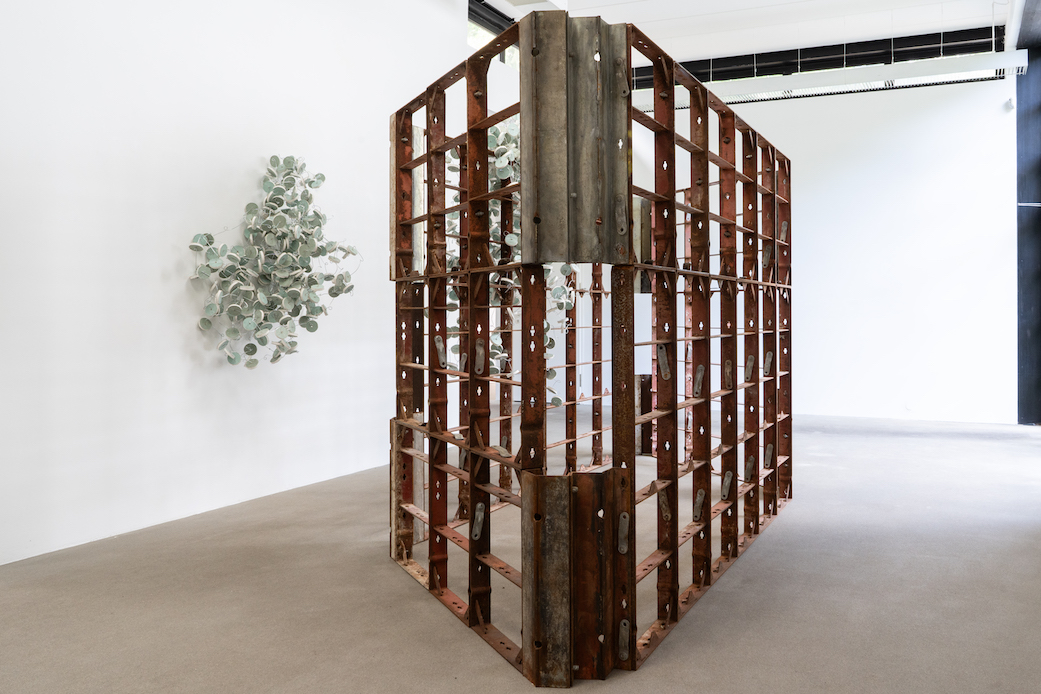
on the left: Volume of Uncertainty (Shift 224), 2024
steel, drywall, wire, approx. 240 x 420 x 184 cm
on the right: Volume of Uncertainty (323), 2017/23
drywall, wire222 x 162 x 77 cm
steel, drywall, wire, approx. 240 x 420 x 184 cm
on the right: Volume of Uncertainty (323), 2017/23
drywall, wire222 x 162 x 77 cm
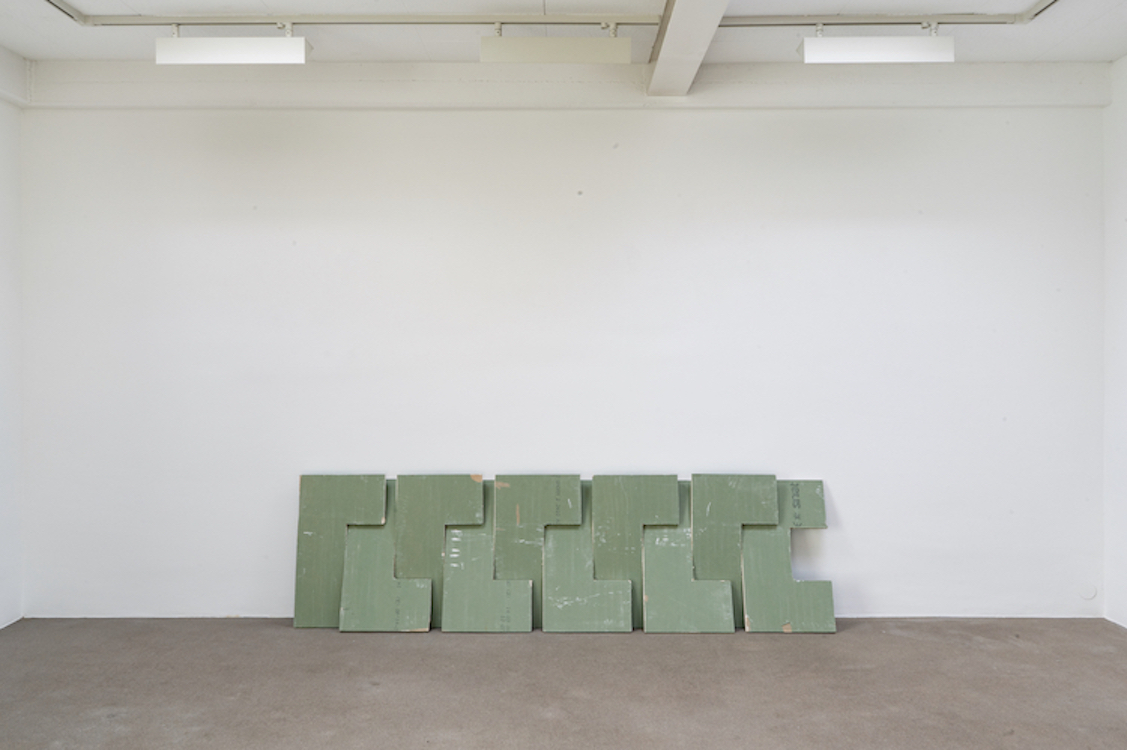
Animation, 2024
drywall, 10 pieces, 80 x 274 x 30 cm
drywall, 10 pieces, 80 x 274 x 30 cm
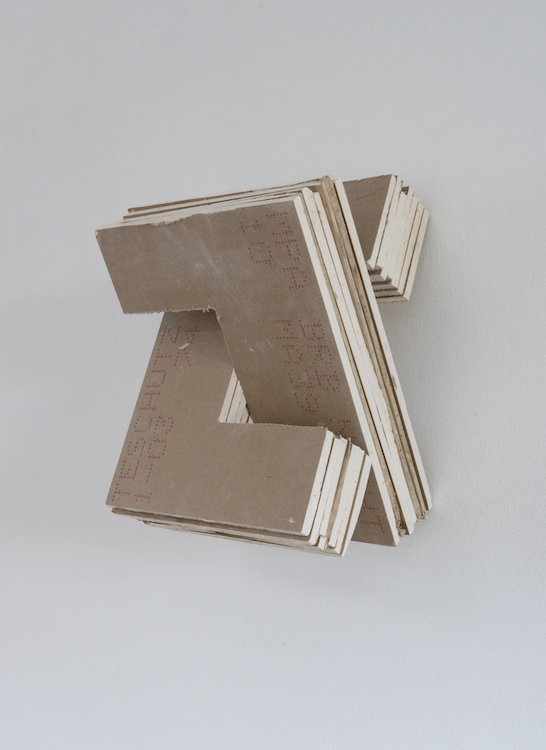
GK UA, 2003/23
drywall, 42 x 29,5 x 26,5 cm
drywall, 42 x 29,5 x 26,5 cm
